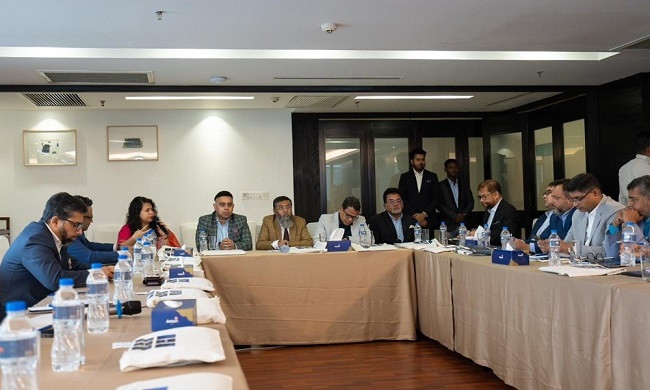For the sustainable development of the garment industry in the country and to survive in the current competitive market, it is necessary to address three challenges on an urgent basis. These are – decarburization, coping with post transition from list of Least Developed Countries (LDCs) and impact of fourth industrial revolution or automation of technology on production systems.

This information was presented in a keynote presentation titled ‘Bunon 2030: Policy-making Discussion’ at a round table meeting at a hotel in Gulshan in the capital on Saturday (May 11). It was presented by Zahedul Amin, Co-Founder and Director of Lightcastle Partners.
The country’s business consultancy firm Lightcastle Partners and Policy Exchange Bangladesh jointly organized this round table meeting. The round table meeting was organized to highlight the actions and recommendations to address the multi-faceted challenges in the garment industry for LDC transition and survival in the competitive market.
The round table meeting was moderated by Dr. M Masrur Riaz, Chairman of Policy Exchange Bangladesh. Aini Islam, Director of Program Development Department of Asia Foundation gave the opening speech.
According to the original article, the biggest crisis will come after transitioning from the list of Least Developed Countries (LDCs) in 2026. Due to LDCs, reduction of other trade benefits including Generalized Scheme of Preferences (GSP), increase in wages of workers, fear of international buyers and importers turning to countries producing garments at a lower cost than Bangladesh, non-compliance of some garment industry owners, will further exacerbate this crisis.
It is also said that according to the 2023 data of the Export Promotion Bureau (EPB), Bangladesh currently ranks second in the world as a single country in the export of ready-made garments. Bangladesh exported garments worth $47 billion till February 2023-2024 fiscal year.
According to Bangladesh Bank, the contribution of this sector in GDP is 10.35 percent in the fiscal year 2023. It employs 4.1 million garment workers, 60 percent of whom are women. As a result, if these problems are not dealt with now, this industry as well as the economy as a whole may be negatively affected.
Among the dignitaries who spoke were Md. Salim Hossain, Deputy Secretary of the Ministry of Commerce; Md. Ariful Haque, Director General of Bangladesh Investment Development Authority (BIDA); Md. Abdur Rahim Khan, Directorate General of Factory and Establishment Inspection; Mohammad Hatem, Executive President of Bangladesh Knitwear Manufacturers and Exporters Association (BKMEA); Kazi Faisal Bin Siraj, Bangladesh Representative of The Asia Foundation and other officials.
Deputy Secretary of the Ministry of Commerce Md. Salim Hossain said diversification of export products under the Free Trade Agreement (FTA) is necessary to face the challenges of the garment industry. In that case, Bangladesh can adopt a production based, creative and timely business model.
Mohammad Hatem said that to diversify fiber production, it is necessary to provide duty-free access to the import of raw materials for man-made fiber (MMF) production.
Director General of BIDA Ariful Haque said that an effective export-oriented policy is needed according to the current and future needs of the country’s garment sector. For this, the policy makers can take the advice of the famous consultancy firms of the country.
Inspector General of Factories and Institutions Inspection Department Md. Abdur Rahim Khan urged Bangladesh to follow successful models like India’s Product Linked Incentive (PLI) scheme to increase garment exports and market expansion.
















